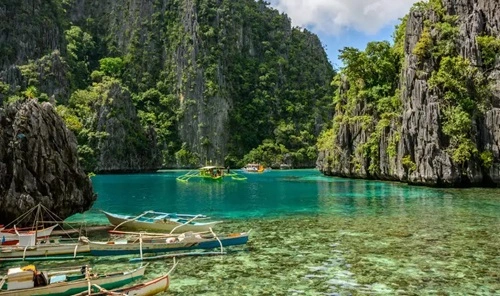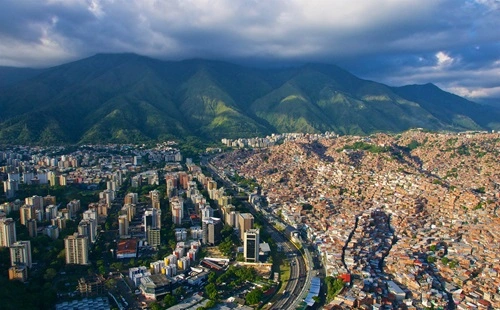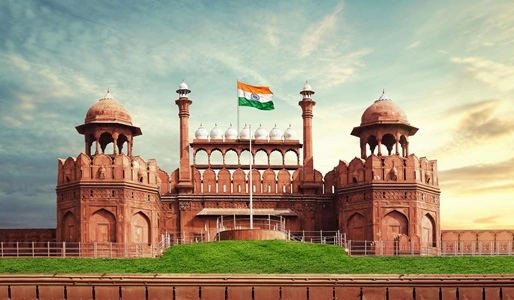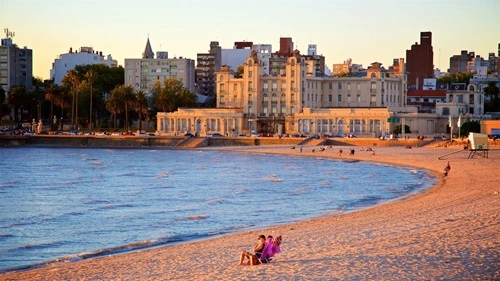The Philippines, an archipelago of over 7,000 islands, is known for its stunning beaches, vibrant festivals, and warm, welcoming people. But beyond its beautiful scenery and famous hospitality, the Philippines has a fascinating history, unique cultural traditions, and some of the most diverse wildlife in the world. Here are over 10 fun and surprising facts about the Philippines that showcase why this Southeast Asian country is such a special destination.

1. An Archipelago with Over 7,641 Islands
The Philippines is made up of a staggering 7,641 islands, making it one of the world’s largest archipelagos. However, only around 2,000 of these islands are inhabited. The islands are grouped into three main geographical divisions: Luzon, Visayas, and Mindanao, each with its own unique cultural identity. From bustling city centers like Manila to remote beach paradises like Palawan, the country offers a wide range of experiences for travelers.
2. Home to One of the World’s Longest Christmas Seasons
Filipinos are known for their love of Christmas, and in the Philippines, the holiday season starts as early as September and lasts well into January. Called the “Ber” months, Filipinos begin decorating, playing Christmas music, and preparing for festivities in September. Celebrations often include caroling, festive lights, and traditional foods, creating a season full of joy and family gatherings that last nearly half the year!
3. English is Widely Spoken
The Philippines is one of the largest English-speaking nations in the world, with over 90% of the population fluent in English. English is one of the country’s official languages, along with Filipino (based on Tagalog), and is widely used in education, business, and government. This high level of English proficiency makes the Philippines an attractive destination for international students, English-speaking tourists, and even businesses looking to outsource services.
4. The Jeepney: A Unique Mode of Transportation
The Jeepney is one of the most iconic symbols of Filipino culture and a popular mode of public transportation. Originally adapted from U.S. military jeeps left after World War II, jeepneys are known for their colorful, vibrant designs and are a practical way to get around cities. Each jeepney is often custom-painted with bright colors, religious symbols, or popular characters, making it both a functional vehicle and a piece of art.
5. The World’s Smallest Active Volcano: Taal Volcano
Located on the island of Luzon, Taal Volcano is the world’s smallest active volcano. Standing at only 311 meters, Taal may be small, but it has a history of powerful eruptions and remains one of the most closely monitored volcanoes in the Philippines. The volcano is set within a large lake, creating a picturesque view that attracts thousands of visitors each year. Taal’s unique location makes it a geological wonder and a popular destination for adventure seekers.
6. The Philippines is a Biodiversity Hotspot
The Philippines is one of the most biodiverse countries on Earth, home to an incredible range of species that are found nowhere else in the world. The country’s rainforests and coral reefs support a wide array of wildlife, including the Philippine eagle, tarsier, and whale sharks. The Tubbataha Reefs Natural Park, a UNESCO World Heritage site, is known for its coral reefs and is one of the most popular diving spots in the world.
7. Filipino Cuisine: A Fusion of Flavors
Filipino cuisine is a unique blend of Malay, Chinese, Spanish, and American influences, creating a fusion of flavors unlike anywhere else in the world. Adobo, often considered the national dish, is a savory blend of meat marinated in vinegar, soy sauce, and spices. Other popular dishes include lechon (roasted pig), sinigang (a sour soup), and halo-halo (a colorful dessert made of shaved ice, sweetened fruits, and jellies). Filipino food is diverse and flavorful, reflecting the country’s multicultural history.
8. The Philippines Has the Only Major Flag with a War Mode
The Philippine flag is unique in that it can be flown in two different ways to indicate peace or war. In times of peace, the blue stripe is displayed on top, but if the country is at war, the red stripe is flown on top. This dual-purpose design reflects the Filipino spirit of resilience and readiness to defend their country if necessary.
9. A Rich Tradition of Festivals
The Philippines is known for its vibrant festivals, known as fiestas, which celebrate everything from religious events to harvests. Some of the most famous festivals include the Sinulog Festival in Cebu, which honors the Santo Niño (Holy Child) and features lively street dances and parades. Another popular celebration is the Ati-Atihan Festival in Kalibo, which also honors the Santo Niño and includes traditional dance, music, and colorful costumes. These festivals are a huge part of Filipino culture and showcase the joyful, celebratory spirit of the Filipino people.
10. The Banaue Rice Terraces: A Wonder of Ancient Engineering
Often called the “Eighth Wonder of the World,” the Banaue Rice Terraces in Ifugao Province are a UNESCO World Heritage site and an impressive feat of ancient engineering. Carved into the mountains over 2,000 years ago by the indigenous Ifugao people, these terraces are still used to grow rice and vegetables today. The terraces are a testament to the ingenuity of the Ifugao and have become an iconic symbol of the Philippines’ rich cultural heritage.
11. The Philippines is a Top Producer of Coconut
The Philippines is one of the world’s largest producers of coconuts, earning it the nickname “Coconut Capital of the World.” Coconuts are an essential part of the Filipino economy and culture, with the fruit used in everything from cooking and baking to beauty products and building materials. Coconut-based dishes like buko (young coconut) salad and ginataang manok (chicken in coconut milk) are popular in Filipino cuisine.
12. The Philippines Has One of the Most Colorful Coral Reefs
The coral reefs in the Philippines are among the most diverse and colorful in the world. The country is part of the Coral Triangle, a region known as the “Amazon of the Oceans” due to its vast marine biodiversity. Tubbataha Reefs, Apo Reef, and Anilao are famous diving spots where divers can experience vibrant underwater ecosystems with over 500 species of coral and thousands of fish species, from vibrant clownfish to majestic manta rays.
13. A Major Source of the World’s Text Messages
Filipinos are known for their love of texting and are among the most active texters globally. In fact, the Philippines was once dubbed the “Texting Capital of the World.” Even with the rise of social media and messaging apps, texting remains a popular and affordable way for Filipinos to communicate. This love for texting has even contributed to Filipino slang and culture, making it an essential part of modern Filipino life.
14. Filipinos Are Known for Their Exceptional Hospitality
One of the most notable aspects of Filipino culture is bayanihan, or communal unity, which reflects the people’s sense of hospitality and helpfulness. Filipinos are known for their warmth, friendliness, and willingness to welcome guests into their homes. This hospitality extends to visitors, making the Philippines one of the friendliest destinations in the world. Filipinos often go out of their way to make tourists feel at home, and many people return to the Philippines because of the kindness they experience.
15. One of the World’s Fastest-Growing Economies
The Philippines has been experiencing significant economic growth in recent years, making it one of Southeast Asia’s fastest-growing economies. Industries such as business process outsourcing (BPO), agriculture, and tourism play a large role in this growth. The country’s BPO industry is particularly strong, with major companies outsourcing call centers and support services to the Philippines due to its highly skilled English-speaking workforce. This growth has helped improve infrastructure and boost job opportunities for Filipinos across the country.
From its crystal-clear waters and vibrant coral reefs to its rich cultural traditions and friendly people, the Philippines has something to offer every traveler. Each of these fun facts highlights what makes the Philippines a unique and remarkable destination, full of history, natural wonders, and a joyful, welcoming spirit. Whether you’re exploring the stunning beaches of Palawan, attending one of the country’s lively festivals, or sampling its delicious food, the Philippines is a place you won’t soon forget. With its beauty, warmth, and endless possibilities for adventure, the Philippines truly lives up to its nickname as the “Pearl of the Orient.”



